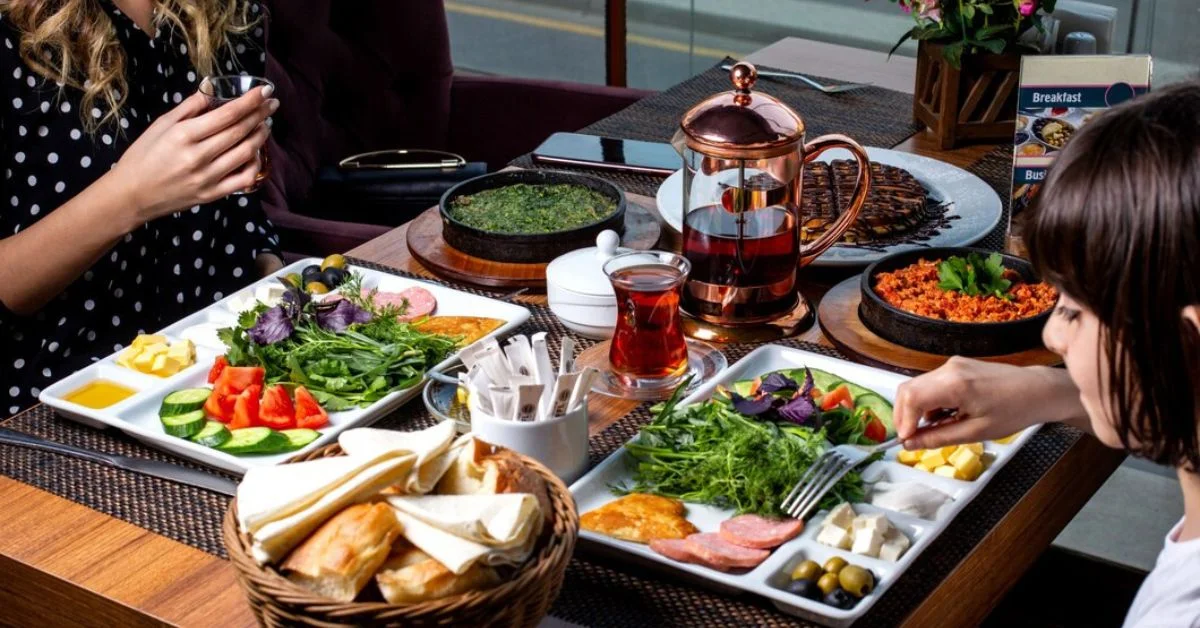Food
IntrepidFood.EU: Discover The Secrets Of European Food Safety
Published
1 year agoon
By
Jack
Table of Contents
ToggleIntroduction to Intrepidfood.eu
Intrepidfood.eu stands as a virtual doorway to the rich tapestry of European culinary delights, offering an immersive experience into the diverse flavors and gastronomic traditions spread across the continent. In a world where food serves as a universal language, this platform serves as a beacon for culinary enthusiasts, inviting them on a journey through the heart and soul of European cuisine.
European Culinary Heritage
European cuisine is a vibrant mosaic woven from centuries of cultural exchange, historical legacies, and regional diversity. From the sun-kissed shores of the Mediterranean to the misty fjords of Scandinavia, each corner of Europe boasts its own distinctive culinary heritage, reflecting the land, climate, and traditions of its people.
Exploring Diverse European Cuisines
Italian Delicacies
Italy, the land of romance and gastronomy, enchants visitors with its sumptuous array of pasta, pizza, and gelato. From the aromatic herbs of Tuscany to the seafood bounty of Sicily, Italian cuisine celebrates the freshness of ingredients and the art of simplicity.
French Gastronomy
France, hailed as the gastronomic capital of the world, tantalizes taste buds with its sophisticated flavors and culinary finesse. From the buttery croissants of Paris to the robust stews of Provence, French cuisine is a testament to elegance and indulgence.
Spanish Tapas and Paella
Spain’s culinary landscape is a vibrant fiesta of colors and flavors, where every dish tells a story of tradition and innovation. From the sizzling tapas bars of Barcelona to the fragrant paella pots of Valencia, Spanish cuisine embodies the spirit of fiesta and celebration.

German Comfort Foods
Germany’s hearty fare warms the soul and fills the belly, with dishes like sauerkraut, bratwurst, and schnitzel offering a taste of Teutonic hospitality. From beer halls to Christmas markets, German cuisine is a comforting embrace in every bite.
Greek Mediterranean Delights
Greece’s sun-drenched shores inspire a cuisine that is as wholesome as it is delicious, with fresh seafood, ripe olives, and creamy feta cheese taking center stage. From moussaka to souvlaki, Greek cuisine is a symphony of flavors that transports diners to the shores of the Aegean.
Regional Flavors and Ingredients
Northern European Influences
The northern reaches of Europe boast a cuisine shaped by cold climates and rugged landscapes, with hearty dishes like Swedish meatballs and Norwegian salmon reflecting the resilience of its people.
Southern European Ingredients
The sun-drenched lands of Southern Europe yield a bounty of fresh produce and aromatic herbs, infusing dishes with the flavors of the Mediterranean and the warmth of the sun.
Eastern European Traditions
Eastern Europe’s culinary traditions are a tapestry woven from centuries of cultural exchange, with dishes like borscht, pierogi, and goulash reflecting the region’s diverse history and heritage.
Western European Culinary Diversity
Western Europe’s culinary landscape is a melting pot of flavors and influences, where classic dishes mingle with modern innovations to create a culinary experience that is both timeless and contemporary.
Unique Dining Experiences
Michelin-Star Restaurants
Europe’s Michelin-starred restaurants are temples of gastronomy, where culinary virtuosos showcase their talents and creativity on a plate. From haute cuisine to avant-garde dining, these establishments redefine the boundaries of taste and innovation.
Street Food Culture
Europe’s vibrant street food scene offers a taste of local flavors and culinary traditions, with bustling markets and food stalls serving up everything from falafel wraps to gourmet burgers.
Farm-to-Table Movement
The farm-to-table movement has taken Europe by storm, with restaurants and farmers’ markets celebrating the bounty of the land and the importance of sustainable agriculture.
Cultural Food Festivals
From Oktoberfest in Germany to the Tomato Festival in Spain, Europe’s cultural food festivals are a celebration of community, tradition, and culinary heritage.
The Art of European Cooking
European cooking is more than just a means of sustenance; it is an art form that celebrates the beauty of simplicity and the joy of sharing a meal with loved ones. From traditional cooking techniques passed down through generations to innovative fusion cuisine that pushes the boundaries of taste and texture, European cooking is a journey of discovery and delight.
Intrepidfood.eu: A Gateway to European Gastronomy
Intrepidfood.eu opens the door to a world of culinary delights, offering a curated selection of recipes, articles, and culinary experiences that celebrate the richness and diversity of European cuisine. Whether you’re a seasoned chef or an enthusiastic home cook, this platform invites you to explore, discover, and savor the flavors of Europe.
In today’s culinary landscape, where diverse cuisines tantalize our taste buds, understanding the intricacies of food safety is paramount. IntrepidFood.EU serves as your gateway to unraveling the enigma surrounding European food safety standards. From farm to fork, European regulations ensure that every morsel meets stringent criteria for quality and hygiene.
The Foundation of European Food Safety
At the core of European food safety lies a robust regulatory framework aimed at safeguarding public health. EU Regulations: A beacon of food safety, the European Union enforces comprehensive regulations governing every aspect of food production, distribution, and consumption. These regulations prioritize consumer well-being, mandating strict adherence to hygiene standards, ingredient quality, and labeling requirements.
Stringent Quality Control Measures
European food safety standards leave no room for compromise. HACCP Principles: Hazard Analysis and Critical Control Points (HACCP) serve as the cornerstone of food safety protocols. By identifying potential hazards and implementing preventive measures at critical stages of production, HACCP minimizes risks and ensures the integrity of the food supply chain.
Traceability and Transparency
Transparency is key to fostering trust in the food we consume. European regulations mandate comprehensive traceability mechanisms, enabling swift identification and recall of unsafe products. From farm origins to distribution channels, every step is meticulously documented, empowering consumers to make informed choices about their dietary preferences.
Embracing Innovation for Safer Food
In an era of technological advancements, innovation plays a pivotal role in enhancing food safety. From blockchain-enabled supply chains to precision farming techniques, Europe embraces cutting-edge solutions to mitigate risks and uphold the highest standards of quality and safety.
Empowering Consumers Through Education
Knowledge is the bedrock of informed decision-making. IntrepidFood.EU goes beyond regulations, empowering consumers with valuable insights into food safety practices. Through interactive resources, educational campaigns, and expert guidance, consumers gain the knowledge they need to navigate the culinary landscape with confidence.
Conclusion
As culinary enthusiasts embark on gastronomic adventures, prioritizing food safety is non-negotiable. IntrepidFood.EU stands as a testament to Europe’s unwavering commitment to excellence in food safety. By unraveling the secrets of European food safety standards, we pave the way for a healthier, more secure future—one delectable bite at a time.
In your culinary journey, let IntrepidFood.EU be your trusted companion, guiding you towards culinary experiences that are as safe as they are sensational. Experience the essence of European gastronomy, where quality, safety, and flavor converge in perfect harmony.
FAQs
- Is European cuisine only about pasta and pizza? European cuisine is incredibly diverse, ranging from hearty stews and roasts to delicate pastries and desserts. While pasta and pizza are staples of Italian cuisine, each European country offers its own unique culinary treasures.
- What are some must-try dishes when visiting Europe? Some must-try dishes include paella from Spain, croissants from France, schnitzel from Germany, moussaka from Greece, and haggis from Scotland, among many others.
- How can I learn to cook European dishes at home? There are many resources available online, including cooking blogs, YouTube channels, and recipe websites, where you can find step-by-step instructions and helpful tips for cooking European dishes at home.
- What is the significance of traditional cooking techniques in European cuisine? Traditional cooking techniques are passed down through generations and play a crucial role in preserving cultural heritage and culinary traditions. From slow braising to artisanal baking, these techniques ensure that each dish is imbued with flavor and authenticity.
Author

